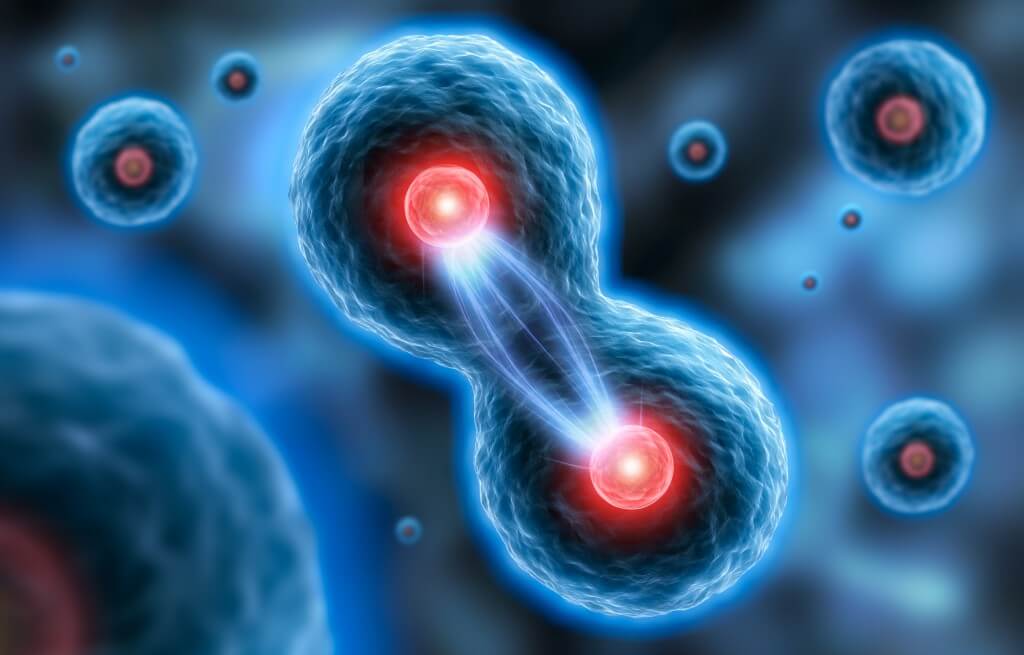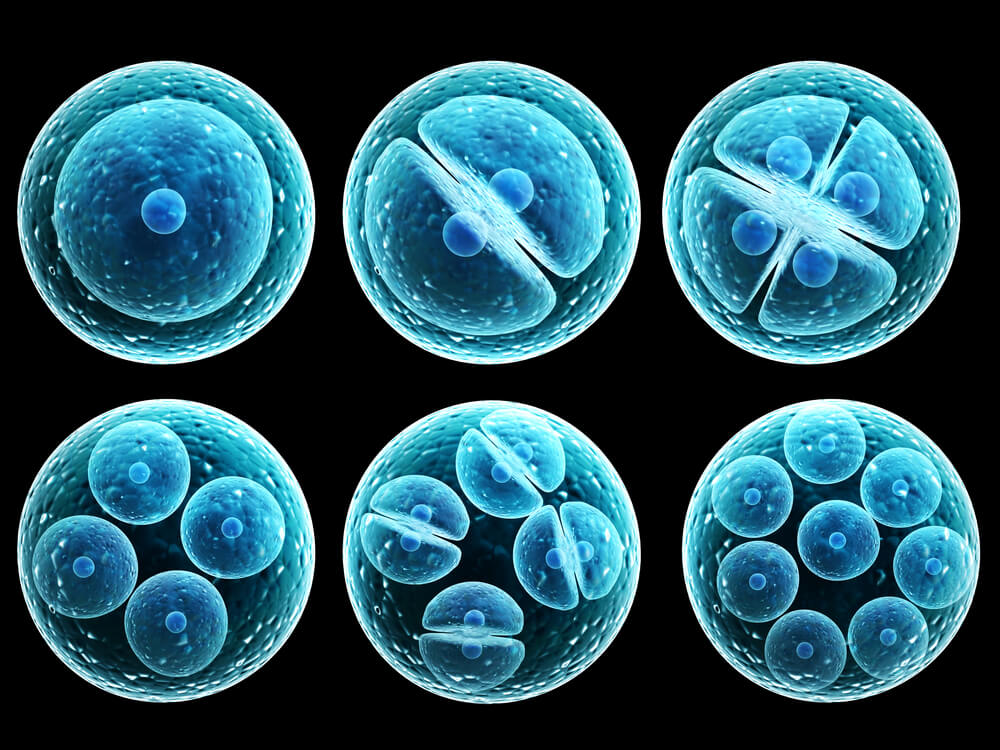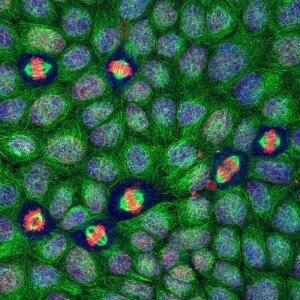
As we age, our stem cell count decreases and we have less and less new somatic cells, which leads to the degradation to organs linked to aging [1].
In cellular biology, a stem cell is an undifferentiated cell which can both generate specialized cells through cellular differentiation, and remain in the body by proliferation (or asymmetrical division). All multicellular living things have stem cells. They play a key role in the development of any organism as well as maintaining their integrity throughout their life.
Stem cells spending is among the risks induced by the aging process [1]. They can continue dividing beyond the Hayflick limit (see: Telomeres, at the heart of the aging process). This phenomenon is partly due to the presence of telomerase, a telomere synthesizing enzyme, which is strongly expressed in regular stem cells [1].
Telomerase is expressed at very high levels during embryo development, then reduced a few weeks after birth in most adult tissues, with the exception of a few cell types : stem cells and fast-renewal cells, such as lymphocytes or skin keratinocytes [1]. Therefore, the fact that telomerase activity is mostly limited to stem cells suggests that their level of expression in those cells could be crucial for body preservation.

In the past few years, the specific role of telomerase in stem cells started to be figured out, especially in hematopoietic stem cells (HSC) [2][3], skin stem cells [4] and neuronal stem cells (NSC) [5]. For instance, it was observed that in men and mice, HSC lose telomeric DNA with age. This progressive shortening of the telomeres seems to act as a barrier to HSC development, limiting the regeneration of hematopoietic cells and the renewal of all blood cells [2].
Regarding skin stem cells, the role of telomere length and activity was always established from TERC-/- mice models, mice lacking the TERC gene. In those mice, telomere shortening is associated to a decrease of skin stem cells function and their mobilization (proliferation and migration) is inhibited outside of the hair follicles [4]. Those mice with critical length telomeres have issues with skin and hair regeneation, which signals skin stem cells malfunction. Besides skin cells, TERC-/- mice have exhibited the atrophy of other tissues that usually benefit from high cellular renewal, such as bone marrow, gut and testicular cells. This atrophy is linked to very short telomeres [1]. All these observations confirm that telomeres and telomerase play a role in preserving stem cells and the good health of tissues in the body.
If telomere shortening with age alters proper stem cell function, the process also seems to be linked to their cellular environment, which could accentuate stem cell deterioration as we age [1]. It was recently shown that short telomeres could also have a negative effect on stem cells microenvironment [6], in mice lacking the TERC gene. They have exhibited perturbations in skin stem cells function after an accelerated shortening of their telomeres. As a consequence, this directly affects lymphocyte B production, which affects in turn antibodies production, and increases myeloid proliferation which can cause a blood cancer characterized by an uncontrolled proliferation of white blood cells. Furthermore, the different modifications of cellular enviroment also limit the capacity of a tissue to accept a bone marrow stem cell transplant [6].

A link was established between the alteration of stem cell microenvironment and age, and the findings were correlated to the progressive shortening of stem cells telomeres.
On top of determining when a somatic stem cell will become senescent, telomeres and telomerase play a role in stem cell preservation processes, protecting those cells which are indispensible to the good function of the body. If telomerase activity seems to degrade with age, the alterations seems to accelerate the aging mechanisms and trigger stem cells degradation. They could be a great target for therapies based on telomerase regulation and preservation, in order to fight against aging.












































